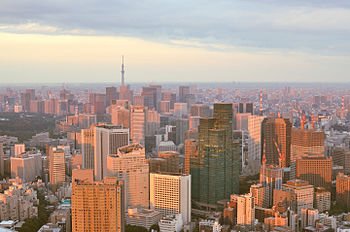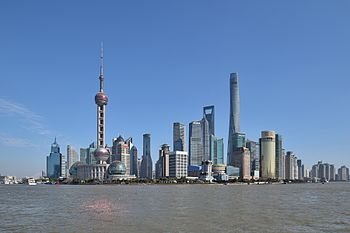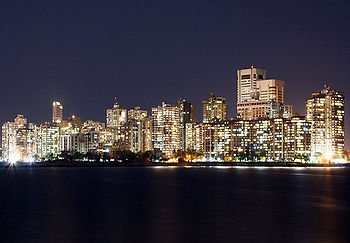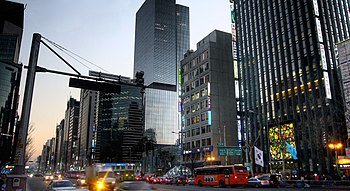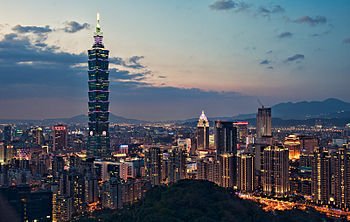Economy of Asia
The Economy of Asia comprises more than 4.4 billion people (60% of the world population) living in 49 different states.[3] Six further states lie partly in Asia, but are considered to belong to another region economically and politically. Asia is the fastest growing economic region as well as the largest continental economy by both GDP Nominal and PPP in the world.[4] China and India are currently the first and third largest economies in Asia respectively. Moreover, Asia is the site of some of the world's longest modern economic booms, starting from the Japanese economic miracle (1950–1990), Miracle on the Han River (1961–1996) in South Korea, the economic boom (1978–2013) in China and the ongoing rapid economic growth (starting 2010) in the Philippines.
As in all world regions, the wealth of Asia differs widely between, and within, states. This is due to its vast size, meaning a huge range of different cultures, environments, historical ties and government systems. The largest economies in Asia in terms of PPP gross domestic product (GDP) are China, India, Japan, South Korea, Indonesia, Turkey, Iran, Saudi Arabia, Taiwan, Thailand, Pakistan, Malaysia and Philippines and in terms of nominal gross domestic product (GDP) are China, Japan, India, South Korea, Russia, Indonesia, Turkey, Philippines, Taiwan, United Arab Emirates, Thailand, Iran, Malaysia, Bangladesh and Singapore.
Wealth (if measured by GDP per capita) is mostly concentrated in the East Asia in territories of China, Japan, South Korea, Hong Kong, Macau, Singapore, Brunei, and Taiwan, as well as in oil rich countries in West Asia such as Saudi Arabia, Qatar, United Arab Emirates, Bahrain, Kuwait, and Oman. Israel and, to a lesser extent Turkey are exceptions: both lie in the territory of Asia despite not often being counted as such. Israel (entrepreneurship on diversified industries) is a developed country, while Turkey (founding member of OECD) is an advanced emerging country. Asia, with the exception of Japan (heavy industry and electrical sophistication), South Korea (heavy industry and information and communication technology), Taiwan (light industry and hi-tech parts manufacturing), Hong Kong (financial industry and services) and Singapore (high-tech manufacturing, biotechnology, financial and business services, and tourism governed by Casino Regulatory Authority of Singapore) in recent years, is currently undergoing rapid growth and industrialization, and China (manufacturing and FDI-led growth[5]) and India (commodities, outsourcing destination and computer software), the two fastest growing major economies in the world. East Asian and Southeast Asian countries generally rely on manufacturing and trade (and then gradually upgrade to industry and commerce[6]), and incrementally building on high-tech industry and financial industry[7] for growth, countries in the Middle East depend more on engineering to overcome climate difficulties for economic growth and the production of commodities, principally Sweet crude oil.[8] Over the years, with rapid economic growth and large trade surplus with the rest of the world, Asia has accumulated over US$4 trillion of foreign exchange reserves – more than half of the world's total, and adding Tertiary sector of the economy and Quaternary sector of the economy to expand in the share of Asia's economy.
